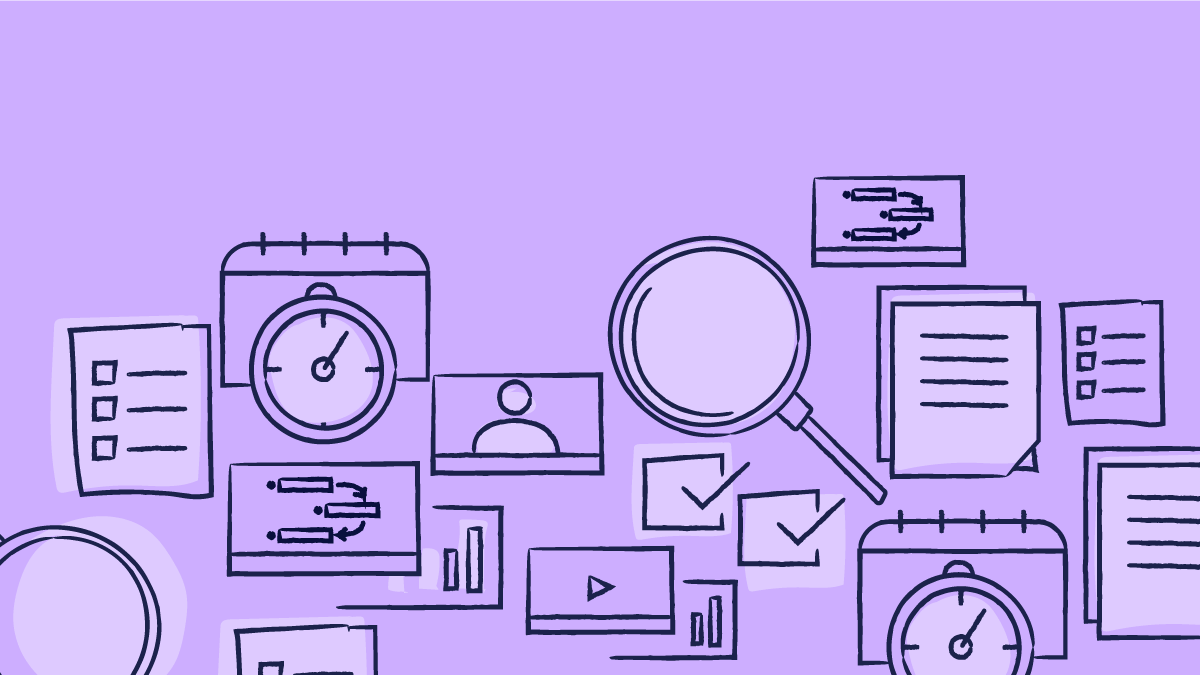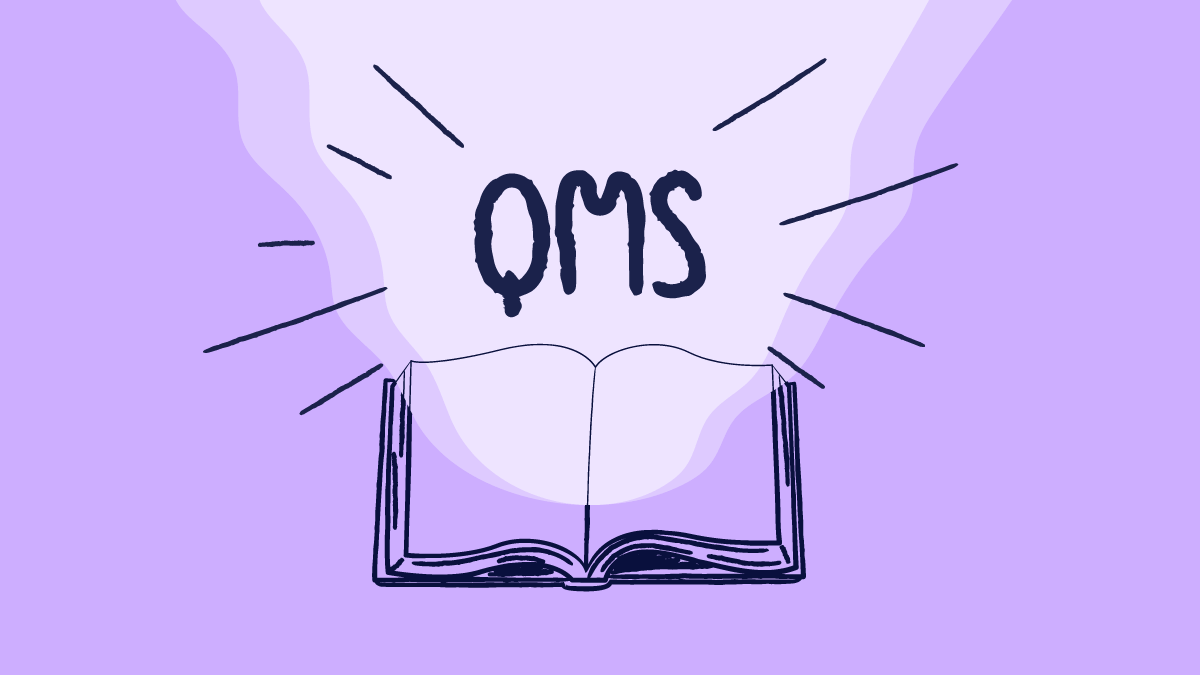
There’s a common misconception in life sciences that quality “costs” money — that any investment in quality such as an eQMS is just another financial burden. But that couldn’t be further from the truth.
Think about it: a single Form 483 Observation can cost hundreds of thousands, and a Warning Letter? We’re talking in the millions. Then there’s the possibility of an import alert or even a consent decree… the numbers only go up from there.
Those things really cost.
And they’re direct consequences of poor quality. All it takes is one bad warning letter, and suddenly, you’re dealing with a major setback. The harsh reality is that poor quality can set all your profits ablaze in an instant.
Putting non-compliance into numbers
To illustrate the gravity of the situation with real numbers, non-routine quality events like FDA observations, recalls, warning letters, and consent decrees cost the medical device industry $7.5–$9 billion annually — plus an additional $1–$2 billion in lost sales.
As you might expect, these figures are even higher in the pharmaceutical industry.
Since 2010, the industry has faced over $87 billion in penalties from more than 500 violations. In 2023 alone, annual penalties averaged $10.2 billion.
Morningstar reports that litigation costs typically account for 3% of pharmaceutical companies' normalized income over a five-year period.
Additionally, we can't ignore the significant costs associated with manufacturing halts and supply chain disruptions, which McKinsey estimates can erode up to 25% of a company's earnings (EBITA) over a decade.
The real value of quality is that it shields your company from ever having to pay those sums.
That’s why any step to improve it and reduce risk, especially with innovative tools like an eQMS, is an investment. After all, paper just doesn’t cut it anymore, and in the direction the industry is heading, it could end up costing you big.
If you're in the pharmaceutical industry and curious to see exactly how you can benefit from an eQMS, don't forget to check our QMS in pharma guide.
So, what’s the problem with paper anyway? Is an eQMS really necessary?
You might be thinking, “We’ve survived plenty of inspections without an eQMS” or “We’ve never received an FDA warning letter.”
And it’s true — it’s possible to get by without an eQMS. You can keep documents organized (with a lot of manual effort), scan paper records, generate electronic QMS documents with digital signatures, create true copies, and store them in platforms like SharePoint.
Maybe this approach has worked well for you so far.
But it’s like using oil lamps and candles before the invention of the light bulb. Sure, it worked; it was fine.
But then electricity came along, offering a far safer and more efficient way to light up a house, reducing fire hazards at the same time. Maybe your house never burned down, but why take the risk? The same principle applies to a paper-based QMS.
Manually managing your QMS can end up costing far more than an eQMS — not only due to the risks involved but also from missed opportunities for improvement, which come with their own hidden costs.
To illustrate exactly what we mean, let’s dive into the paper-based QMS cycle of consequences, which highlights the chain reactions a traditional, paper-based QMS can set in motion.

The cycle of consequences of a paper-based QMS system demonstrates what every business leader fears the most:
- Increased regulatory non-compliance and product recalls
- Lost revenue from market delays
- Limited scalability and growth potential
- Weaker audit preparedness
- Decreased competitive advantage
- Higher risk of data loss and security breaches
These are direct risks of choosing to operate with a paper-based QMS.
Again, you might have gotten by fine without an eQMS, but is it really a sustainable long-term approach? If your objective is growth, then you have a long and painful road ahead with a traditional paper-based QMS.
As your organization grows, so does the volume of documentation. How will you maintain a single source of quality truth with thousands of records — and back them up and locate them instantly during an audit? How will you track changes manually to ensure compliance as complexity and regulatory demands rise?
These tasks only become harder and riskier with paper.
The undeniable truth is that a traditional paper-based QMS is prone to human error, with risks like inconsistent data capture, missing information, or incorrect transcription — issues that can seriously complicate tech transfers, batch production, and more.
And then there’s the financial burden of the paper itself. The average U.S. office spends $80 per employee each year on paper alone — and that’s not even counting filing, storage, and labor costs. That means an organization with 100 employees could easily spend $8,000 annually.
And finally, consider this — and we don’t mean to be harsh — but how do you expect to stay competitive when other life sciences organizations are already integrating AI and GPT into their QMS systems, while you’re still managing data in a filing cabinet or SharePoint?
It’s not even about digitalization anymore. Digital transformation is old news. If you’re not digital, then you’re already behind.
So what’s the deal with an eQMS?
One of the best things about an eQMS is that it centralizes and automates all your quality processes. This means that it can significantly reduce human error and save time through features such as real-time tracking, instant data retrieval, and automated workflows.
Plus, eQMS solutions provide better data security, easier compliance with regulatory updates, and quick, organization-wide access to information when audits or inspections come up.
Most importantly, it reduces the chances of your quality management spiraling out of control, as often happens with paper-based systems at growing organizations. While having an effective system in place is essential (an eQMS isn’t a magical fix for a poor system but a tool to enhance it), think of it as a shield against the worst-case scenario — preventing issues before they arise.
And what’s one of the most dreaded outcomes in life sciences? Non-compliance; an FDA warning letter to be exact.
The true cost of non-compliance: what an FDA letter really costs
If you’ve never experienced an FDA 483 Observation or Warning Letter, you probably don’t realize just how much it can cost.
You might have heard horror stories, but perhaps you dismissed them, thinking an FDA inspection isn’t something you need to worry about — that those figures are overblown and couldn’t possibly apply to you.
Let’s clear that up with a real benchmark from the Vice President at Compliance Architects, a consulting firm for life sciences:
The cost of a warning letter typically equals a minimum of 15% of the sales of the business unit that received it.
This means that if you’re a $10 million business, expect to spend at least $1.5 million to address compliance issues. And that’s without including the indirect costs or fines.
When facing an FDA warning letter, it’s essential to understand the three categories of potential costs: hard, soft, and hidden. The infographic below breaks down each of these types.

The true cost of an FDA warning letter is more than the immediate expense—it’s a cascade of setbacks that can profoundly impact the company.
Imagine a life sciences manufacturer facing a warning letter. Immediately, hundreds of hours go into corrective actions, training, and emergency process updates. Meanwhile, pending product approvals are frozen, stalling releases and losing valuable market share. Revenue takes a hit as customers, unwilling to wait, turn to competitors who are eager to capture their business.
Adding to this, the FDA has made the warning letter public, naming and shaming the company for all to see. Contracts are delayed, clients reconsider, and competitors seize the chance to fill the gap, strengthening their own market positions.
The indirect costs—like lost reputation and eroded trust—are hard to quantify but often cut deeper than the initial expense. In the life sciences, where a company may only have one shot at lasting trust, a damaged reputation is extremely difficult to recover from.
The real consequence of a warning letter, therefore, is not just the immediate financial impact but the long-term survival of the company.
The impact of an FDA warning letter can go beyond immediate costs to threaten the long-term survival of a company. With these risks in mind, investing in robust quality systems and regulatory compliance is not just advisable—it’s essential for pharmaceutical and medical device companies to avoid substantial financial and reputational fallout.
Yet, operating without an eQMS is exactly the kind of costly gamble that can lead to these consequences.
Still wondering how an eQMS could actually protect you from a warning letter? Let us illustrate with a real-life example from a recent warning letter and explain how an eQMS could have prevented the situation entirely.
How an eQMS mitigates non-compliance risk
Did you know that the FDA can inspect your drug manufacturing facility at any time and can do so without notice?
In the case of this company, for some reason, they believed that an FDA inspection wouldn’t happen. The result was that they had to face a warning letter full of serious violations that certainly cost them a lot of time and money.
Now let’s take a look at these violations and how an eQMS could have mitigated these risks and prevented these issues from escalating into regulatory action.
Violation #1: Equipment cleaning and contamination issues
The problems stated in the warning letter:
- Residues of multiple active pharmaceutical ingredients (APIs) were found on equipment labeled as "cleaned."
- API residues were found at levels higher than the allowable limit.
- Cross-contamination risks between different drug products.
How an eQMS could have helped:
- Digital checklists and sign-offs for each cleaning step would make it clear who is responsible for each part of the cleaning process and provide accountability for any missed steps.
- Real-time monitoring and alerts for out-of-specification conditions would help catch contamination issues immediately, alerting operators to excessive API residues or other problems before they lead to cross-contamination.
- Automated equipment history records would track the effectiveness of each cleaning cycle, providing evidence of compliance and ongoing monitoring of cleanliness standards.
Violation #2 Documentation and record-keeping issues
The problems stated in the warning letter:
- Missing batch record pages
- Critical manufacturing steps recorded 25 days after production
- Sample weights changed 22 days after the analysis
- Questionable practices regarding the disposition and destruction of CGMP records
How an eQMS could have helped:
- Secure control of printed documentation and effective reconciliation with the Print & Reconciliation (P&R) module would ensure critical documents are used during activities, eliminating the risk of missing records, misplacement, or paper destruction, and ensuring an effective reconciliation.
- Version control features of electronic records would prevent any unauthorized deletions or changes to templates, ensuring data integrity across the board.
- Electronic workflows would ensure that the approval process for batch records and other critical documents is followed properly, reducing the risk of delayed or missing records.
- A centralized document management system would ensure that all records are stored securely, with an automatic backup system to prevent loss or destruction, ensuring compliance with CGMP requirements.
Violation #3 Inadequate investigations
The problems stated in the warning letter:
- Failure to thoroughly investigate discrepancies and OOS results
- Investigations concluded without proper root cause determination or CAPA initiation
How an eQMS could have helped:
- Structured, guided investigation processes with built-in root cause analysis would ensure that every discrepancy or OOS result is fully explored, preventing the practice of closing investigations without fully addressing the underlying issues.
- Automated CAPA initiation and tracking would ensure that any issues identified during investigations trigger corrective and preventive actions, preventing recurring problems.
- Integration of investigation data with related quality events would provide a holistic view of issues across different departments, helping identify trends and systemic issues.
- Escalation mechanisms for critical issues would ensure that significant problems are automatically brought to the attention of senior management for prompt resolution.
- Standardized templates and workflows would ensure that investigations are thorough and consistent, making sure nothing is overlooked in the process.
Violation #4 Quality oversight and management review
The problems stated in the warning letter:
- Systemic failure in quality oversight and management of GMP operations
How an eQMS could have helped:
- Dashboards providing real-time visibility into quality metrics and compliance status would give management a clear picture of how operations are performing, enabling proactive management and oversight of critical issues.
- Automated escalation of critical issues to management would prevent delays in addressing quality concerns, ensuring that management stays informed and can act quickly.
- Centralized repository of all quality-related data would provide a single source of truth for all quality metrics, making it easier for management to conduct comprehensive reviews and make data-driven decisions.
- Scheduled management review meetings with all relevant data readily available would ensure that management regularly assesses quality performance, identifies areas for improvement, and takes action to resolve issues.
Violation #5 Training and competency management
The problems stated in the warning letter:
- Lack of proper investigation competencies among staff
How an eQMS could have helped:
- Integrated training management system would ensure that staff members have access to up-to-date training resources, ensuring they are well-equipped to handle complex investigations.
- Automated tracking of employee qualifications and training needs would identify when staff are due for training or refresher courses, ensuring they have the necessary competencies at all times.
- Electronic training records with built-in assessments would verify that employees understand the material and can apply it effectively in real-world scenarios.
- Periodic competency evaluations and retraining schedules would ensure that employees stay up-to-date on required skills and regulations, improving the overall investigation process and quality control.
An eQMS could have significantly reduced the likelihood of that company receiving a warning letter by providing essential controls, traceability, and oversight to address issues like those identified here.
The real question to consider is: Are these avoidable business risks worth it for your organization?
Quality is not a cost but poor quality can destroy your business
Too often, quality is seen as a “check-the-box” task, treated as a burden—until disaster hits, like a 483 Observation or a Warning Letter. Only then do decision-makers recognize its true value. Budgets suddenly open, consultants are hired, and eQMS implementations begin.
Unfortunately, by that point, it can cost a few million dollars more than it would have if the investment had been made earlier. Yes, budgets are tight, especially for smaller life sciences companies, and yes, the process can feel overwhelming. But moving to an eQMS sooner rather than later makes for a smoother transition and leaves you better prepared for future inspections.
Once you see that quality is actually a driver of value, not a cost, you won’t look at it the same way again. Quality doesn’t cost — it pays.
We understand that calculating the true return on quality investment can be challenging, but as shown here, when quality falls short, profits take a hit.
The good news? We can actually quantify how much your quality costs today and show you the savings possible with Scilife’s eQMS. Take a look here.





